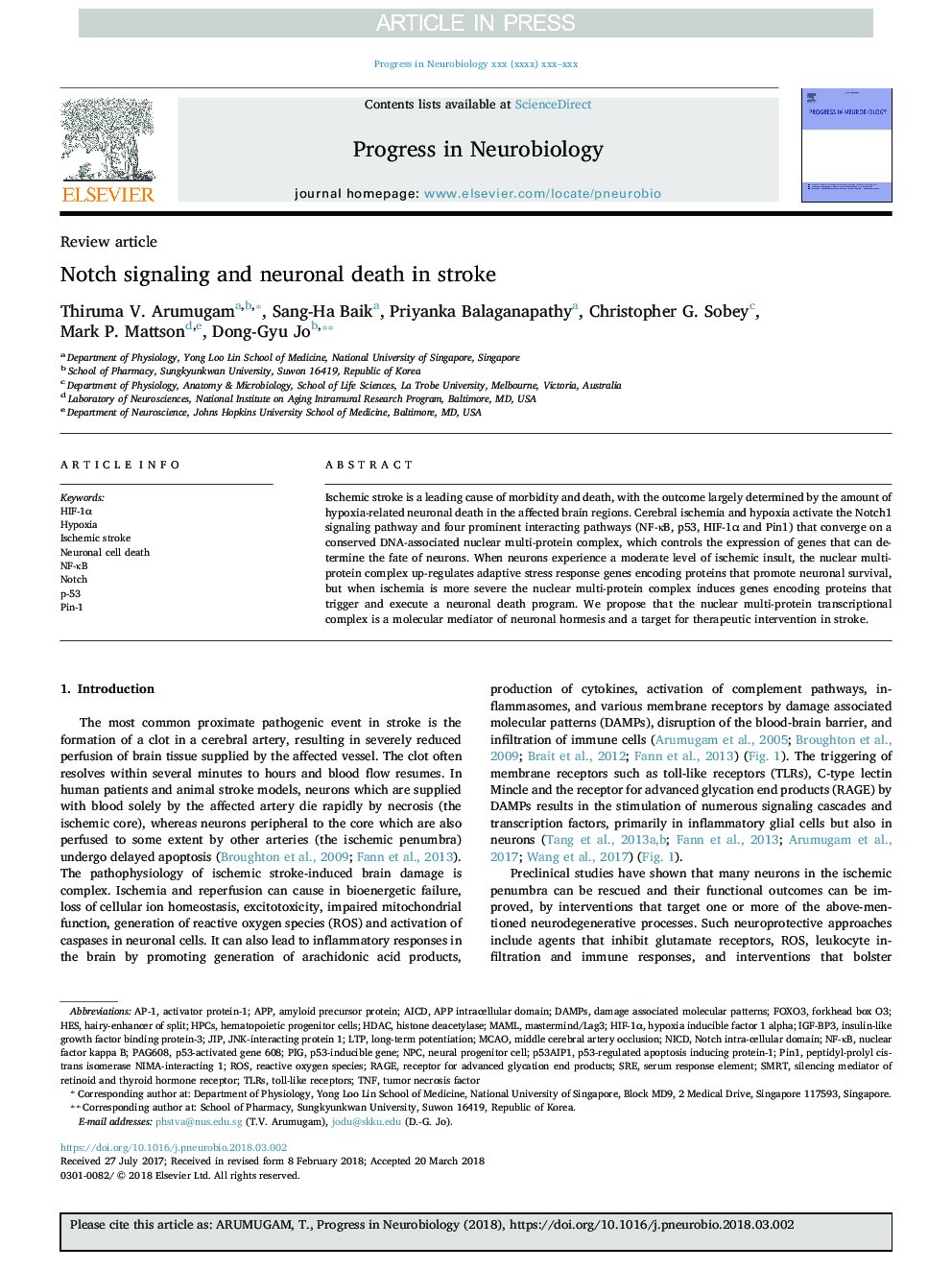| Article ID | Journal | Published Year | Pages | File Type |
|---|---|---|---|---|
| 8842175 | Progress in Neurobiology | 2018 | 14 Pages |
Abstract
Ischemic stroke is a leading cause of morbidity and death, with the outcome largely determined by the amount of hypoxia-related neuronal death in the affected brain regions. Cerebral ischemia and hypoxia activate the Notch1 signaling pathway and four prominent interacting pathways (NF-κB, p53, HIF-1α and Pin1) that converge on a conserved DNA-associated nuclear multi-protein complex, which controls the expression of genes that can determine the fate of neurons. When neurons experience a moderate level of ischemic insult, the nuclear multi-protein complex up-regulates adaptive stress response genes encoding proteins that promote neuronal survival, but when ischemia is more severe the nuclear multi-protein complex induces genes encoding proteins that trigger and execute a neuronal death program. We propose that the nuclear multi-protein transcriptional complex is a molecular mediator of neuronal hormesis and a target for therapeutic intervention in stroke.
Keywords
NF-κBTNFJIPMAMLSMRTSREFOXO3RAGENICDNPCAICDHIF-1αAP-1MCAOAPPHDACDAMPsHPCsROSTLRsdamage associated molecular patternsmiddle cerebral artery occlusionHESlong-term potentiationLTPforkhead box O3PigAPP intracellular domainHematopoietic progenitor cellsneural progenitor cellIschemic strokehypoxia inducible factor 1 alphaSerum response elementtumor necrosis factornuclear factor kappa BNeuronal cell deathNotchhistone deacetylaseHypoxiaInsulin-like growth factor binding protein-3activator protein-1amyloid precursor proteinPin1Reactive oxygen speciesReceptor for advanced glycation end productsToll-like receptors
Related Topics
Life Sciences
Neuroscience
Neuroscience (General)
Authors
Thiruma V. Arumugam, Sang-Ha Baik, Priyanka Balaganapathy, Christopher G. Sobey, Mark P. Mattson, Dong-Gyu Jo,
